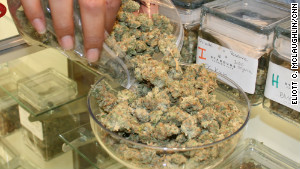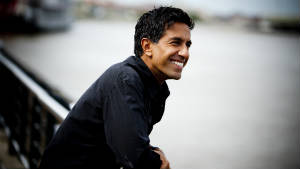The essence of humanity cannot be truly fulfilled without the liberation of the mind....
Thursday, 22 August 2013
Wednesday, 21 August 2013
What is the best method of birth control (or contraception)?
There is no "best" method of birth control. Each method has its pros and cons.
All women and men can have control over when, and if, they become
parents. Making choices about birth control, or contraception, isn't
easy. There are many things to think about. To get started, learn about
birth control methods you or your partner can use to prevent pregnancy.
You can also talk with your doctor about the choices.
Before choosing a birth control method, think about:
Your overall health
How often you have sex
The number of sex partners you have
If you want to have children someday
How well each method works to prevent pregnancy
Possible side effects
Your comfort level with using the method
Keep in mind, even the most effective birth control methods can fail.
But your chances of getting pregnant are lowest if the method you choose
always is used correctly and every time you have sex.
Return to top
What are the different types of birth control?
You can choose from many methods of birth control. They are grouped by how they work:
Types of birth control
Continuous abstinence
Natural family planning/rhythm method
Barrier methods
Contraceptive sponge
Diaphragm, cervical cap, and cervical shield
Female condom
Male condom
Hormonal methods
Oral contraceptives — combined pill ("The pill")
Oral contraceptives — progestin-only pill ("Mini-pill")
The patch
Shot/injection
Vaginal ring
Implantable devices
Implantable rods
Intrauterine devices
Permanent birth control methods
Sterilization implant
Surgical sterilization
Emergency contraception
Detailed information on each type is provided in the following charts.
Talk with your doctor if you have questions about any of the choices.
Continuous abstinence
This means not having sex (vaginal, anal, or oral) at any time. It is
the only sure way to prevent pregnancy and protect against sexually
transmitted infections (STIs), including HIV.
Natural family planning/rhythm method
This method is when you do not have sex or use a barrier method on the
days you are most fertile (most likely to become pregnant). You can read
about barrier methods in the following chart.
A woman who has a
regular menstrual cycle has about 9 or more days each month when she is
able to get pregnant. These fertile days are about 5 days before and 3
days after ovulation, as well as the day of ovulation.
To have
success with this method, you need to learn about your menstrual cycle.
Then you can learn to predict which days you are fertile or "unsafe." To
learn about your cycle, keep a written record of:
When you get your period
What it is like (heavy or light blood flow)
How you feel (sore breasts, cramps)
This method also involves checking your cervical mucus and recording
your body temperature each day. Cervical mucus is the discharge from
your vagina. You are most fertile when it is clear and slippery like raw
egg whites. Use a basal thermometer to take your temperature and record
it in a chart. Your temperature will rise 0.4 to 0.8° F on the first
day of ovulation. You can talk with your doctor or a natural family
planning instructor to learn how to record and understand this
information.
Barrier methods — Put up a block, or barrier, to keep sperm from reaching the egg
Contraceptive sponge
This barrier method is a soft, disk-shaped device with a loop for
taking it out. It is made out of polyurethane (pah-lee-YUR-uh-thayn)
foam and contains the spermicide (SPUR-muh-syd) nonoxynol-9. Spermicide
kills sperm.
Before having sex, you wet the sponge and place
it, loop side down, inside your vagina to cover the cervix. The sponge
is effective for more than one act of intercourse for up to 24 hours. It
needs to be left in for at least 6 hours after having sex to prevent
pregnancy. It must then be taken out within 30 hours after it is
inserted.
Only one kind of contraceptive sponge is sold in the
United States. It is called the Today Sponge. Women who are sensitive to
the spermicide nonoxynol-9 should not use the sponge.
Diaphragm, cervical cap, and cervical shield
These barrier methods block the sperm from entering the cervix (the opening to your womb) and reaching the egg.
The diaphragm is a shallow latex cup.
The cervical cap is a thimble-shaped latex cup. It often is called by its brand name, FemCap.
The cervical shield is a silicone cup that has a one-way valve that
creates suction and helps it fit against the cervix. It often is called
by its brand name, Lea's Shield.
The diaphragm and cervical
cap come in different sizes, and you need a doctor to "fit" you for one.
The cervical shield comes in one size, and you will not need a fitting.
Before having sex, add spermicide (to block or kill sperm) to the
devices. Then place them inside your vagina to cover your cervix. You
can buy spermicide gel or foam at a drug store.
All three of
these barrier methods must be left in place for 6 to 8 hours after
having sex to prevent pregnancy. The diaphragm should be taken out
within 24 hours. The cap and shield should be taken out within 48 hours.
Female condom
This condom is worn by the woman inside her vagina. It keeps sperm from
getting into her body. It is made of thin, flexible, manmade rubber and
is packaged with a lubricant. It can be inserted up to 8 hours before
having sex. Use a new condom each time you have intercourse. And don't
use it and a male condom at the same time.
Male condom
Male condoms are a thin sheath placed over an erect penis to keep sperm
from entering a woman's body. Condoms can be made of latex,
polyurethane, or "natural/lambskin". The natural kind do not protect
against STIs. Condoms work best when used with a vaginal spermicide,
which kills the sperm. And you need to use a new condom with each sex
act.
Condoms are either:
Lubricated, which can make sexual intercourse more comfortable
Non-lubricated, which can also be used for oral sex. It is best to
add lubrication to non-lubricated condoms if you use them for vaginal or
anal sex. You can use a water-based lubricant, such as K-Y jelly. You
can buy them at the drug store. Oil-based lubricants like massage oils,
baby oil, lotions, or petroleum jelly will weaken the condom, causing it
to tear or break.
Keep condoms in a cool, dry place. If you
keep them in a hot place (like a wallet or glove compartment), the latex
breaks down. Then the condom can tear or break.
Hormonal methods — Prevent pregnancy by interfering with ovulation, fertilization, and/or implantation of the fertilized egg
Oral contraceptives — combined pill ("The pill")
The pill contains the hormones estrogen and progestin. It is taken
daily to keep the ovaries from releasing an egg. The pill also causes
changes in the lining of the uterus and the cervical mucus to keep the
sperm from joining the egg.
Some women prefer the "extended
cycle" pills. These have 12 weeks of pills that contain hormones
(active) and 1 week of pills that don't contain hormones (inactive).
While taking extended cycle pills, women only have their period three to
four times a year.
Many types of oral contraceptives are available. Talk with your doctor about which is best for you.
Your doctor may advise you not to take the pill if you:
Are older than 35 and smoke
Have a history of blood clots
Have a history of breast, liver, or endometrial cancer
Antibiotics may reduce how well the pill works in some women. Talk to
your doctor about a backup method of birth control if you need to take
antibiotics.
Women should wait three weeks after giving birth
to begin using birth control that contains both estrogen and progestin.
These methods increase the risk of dangerous blood clots that could form
after giving birth. Women who delivered by cesarean section or have
other risk factors for blood clots, such as obesity, history of blood
clots, smoking, or preeclampsia, should wait six weeks.
The patch
Also called by its brand name, Ortho Evra, this skin patch is worn on
the lower abdomen, buttocks, outer arm, or upper body. It releases the
hormones progestin and estrogen into the bloodstream to stop the ovaries
from releasing eggs in most women. It also thickens the cervical mucus,
which keeps the sperm from joining with the egg. You put on a new patch
once a week for 3 weeks. You don't use a patch the fourth week in order
to have a period.
Women should wait three weeks after giving
birth to begin using birth control that contains both estrogen and
progestin. These methods increase the risk of dangerous blood clots that
could form after giving birth. Women who delivered by cesarean section
or have other risk factors for blood clots, such as obesity, history of
blood clots, smoking, or preeclampsia, should wait six weeks.
Shot/injection
The birth control shot often is called by its brand name Depo-Provera.
With this method you get injections, or shots, of the hormone progestin
in the buttocks or arm every 3 months. A new type is injected under the
skin. The birth control shot stops the ovaries from releasing an egg in
most women. It also causes changes in the cervix that keep the sperm
from joining with the egg.
The shot should not be used more
than 2 years in a row because it can cause a temporary loss of bone
density. The loss increases the longer this method is used. The bone
does start to grow after this method is stopped. But it may increase the
risk of fracture and osteoporosis if used for a long time.
Vaginal ring
This is a thin, flexible ring that releases the hormones progestin and
estrogen. It works by stopping the ovaries from releasing eggs. It also
thickens the cervical mucus, which keeps the sperm from joining the egg.
It is commonly called NuvaRing, its brand name. You squeeze the ring
between your thumb and index finger and insert it into your vagina. You
wear the ring for 3 weeks, take it out for the week that you have your
period, and then put in a new ring.
Women should wait three
weeks after giving birth to begin using birth control that contains both
estrogen and progestin. These methods increase the risk of dangerous
blood clots that could form after giving birth. Women who delivered by
cesarean section or have other risk factors for blood clots, such as
obesity, history of blood clots, smoking, or preeclampsia, should wait
six weeks.
Implantable devices — Devices that are inserted into the body and left in place for a few years.
Implantable rod
This is a matchstick-size, flexible rod that is put under the skin of
the upper arm. It is often called by its brand name, Implanon. The rod
releases a progestin, which causes changes in the lining of the uterus
and the cervical mucus to keep the sperm from joining an egg. Less
often, it stops the ovaries from releasing eggs. It is effective for up
to 3 years.
Intrauterine devices or IUDs
An IUD is a small device shaped like a "T" that goes in your uterus. There are two types:
Copper IUD — The copper IUD goes by the brand name ParaGard. It
releases a small amount of copper into the uterus, which prevents the
sperm from reaching and fertilizing the egg. If fertilization does
occur, the IUD keeps the fertilized egg from implanting in the lining of
the uterus. A doctor needs to put in your copper IUD. It can stay in
your uterus for 5 to 10 years.
Hormonal IUD — The hormonal
IUD goes by the brand name Mirena. It is sometimes called an
intrauterine system, or IUS. It releases progestin into the uterus,
which keeps the ovaries from releasing an egg and causes the cervical
mucus to thicken so sperm can't reach the egg. It also affects the
ability of a fertilized egg to successfully implant in the uterus. A
doctor needs to put in a hormonal IUD. It can stay in your uterus for up
to 5 years.
Permanent birth control methods — For people who are sure they never want to have a child or they do not want more children
Sterilization implant (essure)
Essure is the first non-surgical method of sterilizing women. A thin
tube is used to thread a tiny spring-like device through the vagina and
uterus into each fallopian tube. The device works by causing scar tissue
to form around the coil. This blocks the fallopian tubes and stops the
egg and sperm from joining.
It can take about 3 months for the
scar tissue to grow, so it's important to use another form of birth
control during this time. Then you will have to return to your doctor
for a test to see if scar tissue has fully blocked your tubes.
Surgical sterilization
For women, surgical sterilization closes the fallopian tubes by being
cut, tied, or sealed. This stops the eggs from going down to the uterus
where they can be fertilized. The surgery can be done a number of ways.
Sometimes, a woman having cesarean birth has the procedure done at the
same time, so as to avoid having additional surgery later.
For
men, having a vasectomy (vuh-SEK-tuh-mee) keeps sperm from going to his
penis, so his ejaculate never has any sperm in it. Sperm stays in the
system after surgery for about 3 months. During that time, use a backup
form of birth control to prevent pregnancy. A simple test can be done to
check if all the sperm is gone; it is called a semen analysis.
Emergency contraception — Used if a woman's primary method of birth
control fails. It should not be used as a regular method of birth
control.
Emergency contraception (Plan B One-Step or Next Choice. It is also called the "morning after pill.")
Emergency contraception keeps a woman from getting pregnant when she
has had unprotected vaginal intercourse. "Unprotected" can mean that no
method of birth control was used. It can also mean that a birth control
method was used but it was used incorrectly, or did not work (like a
condom breaking). Or, a woman may have forgotten to take her birth
control pills. She also may have been abused or forced to have sex.
These are just some of the reasons women may need emergency
contraception.
Emergency contraception can be taken as a single
pill treatment or in two doses. A single dose treatment works as well
as two doses and does not have more side effects. It works by stopping
the ovaries from releasing an egg or keeping the sperm from joining with
the egg. For the best chances for it to work, take the pill as soon as
possible after unprotected sex. It should be taken within 72 hours after
having unprotected sex.
A single-pill dose or two-pill dose of emergency contraception is available over-the-counter (OTC) for women ages 17 and older.
Return to top
Can all types of birth control prevent sexually transmitted infections (STIs)?
No. The male latex condom is the only birth control method proven to
help protect you from STIs, including HIV. Research is being done to
find out how effective the female condom is at preventing STIs and HIV.
For more information, see Will birth control pills protect me from
sexually transmitted infections (STIs), including HIV/AIDS?
Return to top
How well do different kinds of birth control work? Do they have side effects?
All birth control methods work the best if used correctly and every
time you have sex. Be sure you know the right way to use them. Sometimes
doctors don't explain how to use a method because they assume you
already know. Talk with your doctor if you have questions. They are used
to talking about birth control. So don't feel embarrassed about talking
to him or her.
Some birth control methods can take time and
practice to learn. For example, some people don't know you can put on a
male condom "inside out." Also, not everyone knows you need to leave a
little space at the tip of the condom for the sperm and fluid when a man
ejaculates, or has an orgasm.
Here is a list of some birth control methods with their failure rates and possible side effects.
Birth control methods, failure rates, and side effects Method Failure
rate (the number of pregnancies expected per 100 women) Some side
effects and risks
Sterilization surgery for women
Less than 1 pregnancy
Pain
Bleeding
Complications from surgery
Ectopic (tubal) pregnancy
Sterilization implant for women
(Essure)
Less than 1 pregnancy
Pain
Ectopic (tubal) pregnancy
Sterilization surgery for men
Less than 1 pregnancy
Pain
Bleeding
Complications from surgery
Implantable rod
(Implanon)
Less than 1 pregnancy
Might not work as well for women who are overweight or obese.
Acne
Weight gain
Ovarian cysts
Mood changes
Depression
Hair loss
Headache
Upset stomach
Dizziness
Sore breasts
Changes in period
Lower interest in sex
Intrauterine device
(ParaGard, Mirena)
Less than 1 pregnancy
Cramps
Bleeding between periods
Pelvic inflammatory disease
Infertility
Tear or hole in the uterus
Shot/injection
(Depo-Provera)
Less than 1 pregnancy
Bleeding between periods
Weight gain
Sore breasts
Headaches
Bone loss with long-term use
Oral contraceptives (combination pill, or "the pill")
5 pregnancies
Being overweight may increase the chance of getting pregnant while using the pill.
Dizziness
Upset stomach
Changes in your period
Changes in mood
Weight gain
High blood pressure
Blood clots
Heart attack
Stroke
New vision problems
Oral contraceptives (continuous/extended use, or "no-period pill")
5 pregnancies
Being overweight may increase the chance of getting pregnant while using the pill.
Same as combination pill
Spotting or bleeding between periods
Hard to know if pregnant
Oral contraceptives (progestin-only pill, or "mini-pill")
5 pregnancies
Being overweight may increase the chance of getting pregnant while using the pill.
Spotting or bleeding between periods
Weight gain
Sore breasts
Skin patch
(Ortho Evra)
5 pregnancies
May not work as well in women weighing more than 198 pounds.
Similar to side effects for the combination pill
Greater exposure to estrogen than with other methods
Vaginal ring (NuvaRing)
5 pregnancies
Similar to side effects for the combination pill
Swelling of the vagina
Irritation
Vaginal discharge
Male condom
11-16 pregnancies
Allergic reactions
Diaphragm with spermicide
15 pregnancies
Irritation
Allergic reactions
Urinary tract infection
Toxic shock if left in too long
Sponge with spermicide (Today Sponge)
16-32 pregnancies
Irritation
Allergic reactions
Hard time taking it out
Toxic shock if left in too long
Cervical cap with spermicide
17-23 pregnancies
Irritation
Allergic reactions
Abnormal Pap smear
Toxic shock if left in too long
Female condom
20 pregnancies
Irritation
Allergic reactions
Natural family planning (rhythm method)
25 pregnancies
None
Spermicide alone
30 pregnancies
It works best if used along with a barrier method, such as a condom.
Irritation
Allergic reactions
Urinary tract infection
Emergency contraception ("morning-after pill," "Plan B One-Step," "Next Choice")
1 pregnancy
It must be used within 72 hours of having unprotected sex.
Should not be used as regular birth control; only in emergencies.
Upset stomach
Vomiting
Lower stomach pain
Fatigue
Headache and dizziness
Irregular bleeding
Breast tenderness
Return to top
Where can I get birth control? Do I need to see a doctor?
Where you get birth control depends on what method you choose.
You can buy these forms over the counter:
Male condoms
Female condoms
Sponges
Spermicides
Emergency contraception pills (girls younger than 17 need a prescription)
You need a prescription for these forms:
Oral contraceptives: the pill, the mini-pill
Skin patch
Vaginal ring
Diaphragm (your doctor needs to fit one to your shape)
Cervical cap
Cervical shield
Shot/injection (you get the shot at your doctor's office)
IUD (inserted by a doctor)
Implantable rod (inserted by a doctor)
You will need surgery or a medical procedure for:
Sterilization, female and male
Return to top
Are there any foams or gels I can use to keep from getting pregnant?
You can buy spermicides over the counter. They work by killing sperm. They come in many forms:
Foam
Gel
Cream
Film
Suppository
Tablet
Spermicides are put in the vagina no more than 1 hour before having
sex. If you use a film, suppository, or tablet, wait at least 15 minutes
before having sex so the spermicide can dissolve. Do not douche or
rinse out your vagina for at least 6 to 8 hours after having sex. You
will need to use more spermicide each time you have sex.
Spermicides work best if used along with a barrier method, such as a
condom, diaphragm, or cervical cap. Some spermicides are made just for
use with the diaphragm and cervical cap. Check the package to make sure
you are buying what you need.
All spermicides contain
sperm-killing chemicals. Some contain nonoxynol-9, which may raise your
risk of HIV if you use it a lot. It irritates the tissue in the vagina
and anus, so it can cause the HIV virus to enter the body more freely.
Some women are sensitive to nonoxynol-9 and need to use spermicides
without it. Medications for vaginal yeast infections may lower the
effectiveness of spermicides. Also, spermicides do not protect against
sexually transmitted infections.
Return to top
How effective is withdrawal as a birth control method?
Not very! Withdrawal is when a man takes his penis out of a woman's
vagina (or "pulls out") before he ejaculates, or has an orgasm. This
stops the sperm from going to the egg. "Pulling out" can be hard for a
man to do. It takes a lot of self-control.
Even if you use
withdrawal, sperm can be released before the man pulls out. When a man's
penis first becomes erect, pre-ejaculate fluid may be on the tip of the
penis. This fluid has sperm in it. So you could still get pregnant.
Withdrawal does not protect you from STIs or HIV.
Return to top
Everyone I know is on the pill. Is it safe?
Today's pills have lower doses of hormones than ever before. This has
greatly lowered the risk of side effects. But there are still pros and
cons with taking birth control pills. Pros include having:
More regular and lighter periods
Fewer menstrual cramps
A lower risk of ovarian and endometrial cancers, pelvic
inflammatory disease (PID), noncancerous ovarian cysts, and iron
deficiency anemia
Cons include a higher chance, for some women, of:
Heart disease, high blood pressure, and blood clots
Nausea, headaches, sore breasts, and weight gain
Irregular bleeding
Depression
Many of these side effects go away after taking the pill for a few
months. Women who smoke, are older than 35, or have a history of blood
clots or breast or endometrial cancer are more at risk of bad side
effects and may not be able to take the pill. Talk with your doctor
about whether the pill is right for you.
Return to top
Will birth control pills protect me from sexually transmitted infections (STIs), including HIV/AIDS?
No, they won't protect you. Birth control pills and most other birth
control methods will not protect you from STIs, including HIV (the virus
that causes AIDS). They only protect against pregnancy.
The
male latex condom is the best birth control method that also can protect
you from STIs, including HIV. If you are allergic to latex,
polyurethane condoms are a good alternative. If your partner can't or
won't use a male condom, female condoms also create a barrier that can
help protect you from STIs.
It is important to only use latex
or polyurethane condoms to protect you from STIs. "Natural" or
"lambskin" condoms have tiny pores that may allow for the passage of
viruses like HIV, hepatitis B, and herpes. If you use non-lubricated
male condoms for vaginal or anal sex, you can add lubrication with
water-based lubricants (like K-Y jelly) that you can buy at a drug
store. Never use oil-based products, such as massage oils, baby oil,
lotions, or petroleum jelly, to lubricate a male condom. These will
weaken the condom, causing it to tear or break. Use a new condom with
each sex act.
Return to top
I've heard my girlfriends talking about dental dams — what are they?
The dental dam is a square piece of rubber that is used by dentists
during oral surgery and other procedures. It is not a method of birth
control. But it can be used to help protect people from STIs, including
HIV, during oral-vaginal or oral-anal sex. It is placed over the opening
to the vagina or the anus before having oral sex. You can buy dental
dams at surgical supply stores.
5 things to know about marijuana in the U.S.
There appears to be a shift in the United States in favor of relaxing marijuana laws. Making pot legal, supporters say, can simultaneously provide relief for the sick and poke a hole in the operations of drug cartels. But the federal government has not acted to remove marijuana's label as a controlled substance and has reaffirmed its anti-pot policy.
Morgan Spurlock's new program, "Inside Man,"
premieres on CNN this weekend with an in-depth look at the medical
marijuana business in California. Here are five things to know about the
current debate over the drug:
There is evidence of changing attitudes in America
Public perceptions about
pot have come a long way in the past decades, from the dire warnings of
"Reefer Madness" to growing acceptance of medical marijuana use.
 What is a marijuana clinic like?
What is a marijuana clinic like?
 Spurlock: 'I'm Harborside's newest hire'
Spurlock: 'I'm Harborside's newest hire'
Laws in several states decriminalizing marijuana or allowing for medical marijuana use are one indicator of how voters feel.
Two states -- Colorado and Washington -- have completely legalized pot for recreational use.
Adrien Grenier, best
known for his role in the HBO hit "Entourage," produced a documentary
film that examines who the people swept up in the war on drugs really
are.
He made the film, "How to Make Money Selling Drugs," as a way to "examine the hypocrisy of the war on drugs," he wrote recently.
Grenier's views reflect
those of an increasing number of Americans who, polls show, see the
prohibition of marijuana as a waste of billions of dollars.
"I want to make clear
that I am not looking to glamorize the drug trade," Grenier wrote. "But
it is important to understand that little is to be gained from stigma
and demonization."
Cheryl Shuman, who calls
herself the Martha Stewart of marijuana, argues that marijuana can make
you a better parent and provide economic opportunities for others.
"The bottom line is cannabis is here to stay, the toothpaste is out of the tube," Shulman told CNN's Piers Morgan.
But not all are convinced.
Last year, John Walters,
who directed the White House Office of National Drug Control Policy
from 2001 to 2009, told CNN that decriminalization is "utterly self-defeating" and would cause more crime.
The cost of prohibition remains high
It is estimated that
$7.6 billion is spent annually by state and local justice systems on
marijuana arrests, according to advocacy group NORML.
Advocates of reforms say
instead of spending this money on enforcement, the government could
spend it elsewhere and tax marijuana to reap even more for its coffers.
Indeed, taxing pot could raise hundreds of millions of dollars, but there is no guarantee that it would be a moneymaker for states.
The financial gains in
Washington and Colorado, the two states that have legalized marijuana,
have not been as great as some expected.
Washington had projected
up to $450 million in added annual tax revenue, but the state's new pot
consultant figures it could be little more than half that.
In Colorado, the
Colorado Futures Center think tank forecasts $130 million in new tax
revenue but thinks that won't even cover the cost of regulating the new
industry.
Still, some say the legalization of pot would bring down the black markets that have left a murderous trail, drawing parallels with what happened during and after the prohibition of alcohol in the 1920s and '30s.
Estimates vary widely on
how big a hit drug cartels would take if marijuana were legalized.
While U.S. officials said in 2009 that 60% of cartel revenue came from
weed, the RAND Corp. said the following year that "15-26 percent is a
more credible range."
A report this month by
the Mexican Competitiveness Institute predicted Mexican drug
organizations, specifically the Sinaloa Cartel, could lose almost $2.8
billion just from the legalization votes in Colorado and Washington.
Studies cite medicinal benefits of marijuana
The wall of prohibition began to show cracks when it became accepted that marijuana has medicinal uses.
Medical marijuana
dispensaries have clients who suffer ills ranging from cancer to AIDS to
chronic pain. Proponents say the drug's pain-relieving properties offer
an alternative for cancer patients undergoing chemotherapy or radiation
treatments.
Opponents, however, say that science has yet to prove that marijuana is safe.
A series of trials published by the University of California Center for Medicinal Cannabis Research last year showed cannabis can help patients
suffering from neuropathic pain, commonly caused by degenerative
diseases like multiple sclerosis or fibromyalgia. Neuropathic pain is
also a common side effect of chemotherapy and radiation.
Study participants on
cannabis reported a 34% to 40% decrease in pain, compared with the 17%
to 20% decrease seen in patients on a placebo drug.
The National Institute
on Drug Abuse, meanwhile, says that marijuana causes an increase in
heart rate, which could put users at risk for a heart attack or stroke.
Marijuana smoke also contains carcinogens similar to those in tobacco
smoke.
Jason David, whose son Jayden suffers from seizures, turned to the drug and calls it "miracle marijuana."
Jayden has Dravet
syndrome, a rare and catastrophic form of childhood epilepsy. The boy
started taking a liquid, nonpsychoactive form of marijuana, which his
father says controls his violent seizures. This form ensures that Jayden
does not get high from the drug, his father says, but has allowed him
to enjoy the things other boys do.
Medical marijuana dispensaries are not what you imagine
Spurlock said he
imagined that marijuana dispensaries -- the places where patients can
purchase medical pot -- would be shady places. What he found at Harborside Health Center, the largest dispensary in the country, surprised him.
The space was large and
clean, nicer than many health clinics he has been to, Spurlock said.
Tight security regulated who could enter the business, which sells
various strains of marijuana and lotions, pills and other products
derived from the drug.
Some strains of
marijuana are known to be more cerebral and energizing, while others are
more sedative in nature and have greater pain-relieving properties.
Dispensaries such as Harborside categorize their products accordingly
and have specific strains for different ailments.
Marijuana laws put state and federal statutes at odds
Eighteen states have
either decriminalized or allowed medical marijuana in some fashion.
While the state laws have allowed dispensaries to open, they remain
illegal under federal law. The gap between state and federal laws is
widening when it comes to marijuana enforcement.
For instance, state law
makes it legal to possess marijuana in Washington state, but selling
drugs is still a federal crime. There is a similar situation in
California, where medical marijuana is allowed, but again, growers don't
have the same legal protections that users have.
Pot smokers in Washington celebrated in Seattle's Space Needle by toking up as the law legalizing weed went into effect, but growing and selling it remain felonies.
"So I'm not sure where
you're supposed to get it," King County Prosecutor Dan Satterberg said
when the law went into effect. "If you stumble across some on the street
or it falls from the sky, then you can have it. Otherwise, you are part
of a criminal chain of distribution."
In 1996, California
voters approved Proposition 215 to exempt doctors and seriously ill
patients from marijuana laws and allow them to grow and use it in
treatment. But government crackdowns on growers since then have led to
multiple lawsuits.
Harborside, the dispensary that Spurlock visited, is fighting to remain open amid efforts by the feds to shut it down.
By Mariano Castillo, CNN
June 23, 2013 Why I changed my mind on weed
Over the last year, I have been working on a new documentary called
"Weed." The title "Weed" may sound cavalier, but the content is not.

 Medical facts of Marijuana
Medical facts of Marijuana
 WEED: A Dr. Sanjay Gupta Special
WEED: A Dr. Sanjay Gupta Special
I traveled around the
world to interview medical leaders, experts, growers and patients. I
spoke candidly to them, asking tough questions. What I found was
stunning.
Long before I began this
project, I had steadily reviewed the scientific literature on medical
marijuana from the United States and thought it was fairly unimpressive.
Reading these papers five years ago, it was hard to make a case for
medicinal marijuana. I even wrote about this in a TIME magazine article,
back in 2009, titled "Why I would Vote No on Pot."
Well, I am here to apologize.
I apologize because I
didn't look hard enough, until now. I didn't look far enough. I didn't
review papers from smaller labs in other countries doing some remarkable
research, and I was too dismissive of the loud chorus of legitimate
patients whose symptoms improved on cannabis.
Instead, I lumped them
with the high-visibility malingerers, just looking to get high. I
mistakenly believed the Drug Enforcement Agency listed marijuana as a schedule 1 substance
because of sound scientific proof. Surely, they must have quality
reasoning as to why marijuana is in the category of the most dangerous
drugs that have "no accepted medicinal use and a high potential for
abuse."

Dr. Sanjay Gupta is a neurosurgeon and CNN's chief medical correspondent.
They didn't have the
science to support that claim, and I now know that when it comes to
marijuana neither of those things are true. It doesn't have a high
potential for abuse, and there are very legitimate medical applications.
In fact, sometimes marijuana is the only thing that works. Take the
case of Charlotte Figi,
who I met in Colorado. She started having seizures soon after birth. By
age 3, she was having 300 a week, despite being on seven different
medications. Medical marijuana has calmed her brain, limiting her
seizures to 2 or 3 per month.
I have seen more patients
like Charlotte first hand, spent time with them and come to the
realization that it is irresponsible not to provide the best care we can
as a medical community, care that could involve marijuana.
We have been terribly and
systematically misled for nearly 70 years in the United States, and I
apologize for my own role in that.
 Medical facts of Marijuana
Medical facts of Marijuana
 WEED: A Dr. Sanjay Gupta Special
WEED: A Dr. Sanjay Gupta Special
I hope this article and upcoming documentary will help set the record straight.
On August 14, 1970, the
Assistant Secretary of Health, Dr. Roger O. Egeberg wrote a letter
recommending the plant, marijuana, be classified as a schedule 1
substance, and it has remained that way for nearly 45 years. My research
started with a careful reading of that decades old letter. What I found
was unsettling. Egeberg had carefully chosen his words:
"Since there is still a
considerable void in our knowledge of the plant and effects of the
active drug contained in it, our recommendation is that marijuana be
retained within schedule 1 at least until the completion of certain
studies now underway to resolve the issue."
Not because of sound
science, but because of its absence, marijuana was classified as a
schedule 1 substance. Again, the year was 1970. Egeberg mentions studies
that are underway, but many were never completed. As my investigation
continued, however, I realized Egeberg did in fact have important
research already available to him, some of it from more than 25 years
earlier.
High risk of abuse
In 1944, New York Mayor Fiorello LaGuardia commissioned research
to be performed by the New York Academy of Science. Among their
conclusions: they found marijuana did not lead to significant addiction
in the medical sense of the word. They also did not find any evidence
marijuana led to morphine, heroin or cocaine addiction.
We now know that while
estimates vary, marijuana leads to dependence in around 9 to 10% of its
adult users. By comparison, cocaine, a schedule 2 substance "with less abuse potential than schedule 1 drugs" hooks 20% of those who use it. Around 25% of heroin users become addicted.
The worst is tobacco, where the number is closer to 30% of smokers, many of whom go on to die because of their addiction.
There is clear evidence
that in some people marijuana use can lead to withdrawal symptoms,
including insomnia, anxiety and nausea. Even considering this, it is
hard to make a case that it has a high potential for abuse. The physical
symptoms of marijuana addiction are nothing like those of the other
drugs I've mentioned. I have seen the withdrawal from alcohol, and it
can be life threatening.
I do want to mention a
concern that I think about as a father. Young, developing brains are
likely more susceptible to harm from marijuana than adult brains. Some
recent studies suggest that regular use in teenage years leads to a
permanent decrease in IQ. Other research hints at a possible heightened
risk of developing psychosis.
Much in the same way I
wouldn't let my own children drink alcohol, I wouldn't permit marijuana
until they are adults. If they are adamant about trying marijuana, I
will urge them to wait until they're in their mid-20s when their brains
are fully developed.
Medical benefit
While investigating, I
realized something else quite important. Medical marijuana is not new,
and the medical community has been writing about it for a long time.
There were in fact hundreds of journal articles, mostly documenting the
benefits. Most of those papers, however, were written between the years
1840 and 1930. The papers described the use of medical marijuana to
treat "neuralgia, convulsive disorders, emaciation," among other things.
A search through the U.S. National Library of Medicine this past year pulled up nearly 20,000 more recent papers. But the majority were research into the harm of marijuana, such as "Bad trip due to anticholinergic effect of cannabis," or "Cannabis induced pancreatitits" and "Marijuana use and risk of lung cancer."
In my quick running of
the numbers, I calculated about 6% of the current U.S. marijuana studies
investigate the benefits of medical marijuana. The rest are designed to
investigate harm. That imbalance paints a highly distorted picture.
The challenges of marijuana research
To do studies on marijuana in the United States today, you need two important things.
First of all, you need
marijuana. And marijuana is illegal. You see the problem. Scientists can
get research marijuana from a special farm in Mississippi, which is
astonishingly located in the middle of the Ole Miss campus, but it is
challenging. When I visited this year, there was no marijuana being
grown.
The second thing you
need is approval, and the scientists I interviewed kept reminding me how
tedious that can be. While a cancer study may first be evaluated by the
National Cancer Institute, or a pain study may go through the National
Institute for Neurological Disorders, there is one more approval
required for marijuana: NIDA, the National Institute on Drug Abuse. It
is an organization that has a core mission of studying drug abuse, as
opposed to benefit.
Stuck in the middle are the legitimate patients who depend on marijuana as a medicine, oftentimes as their only good option.
Keep in mind that up
until 1943, marijuana was part of the United States drug pharmacopeia.
One of the conditions for which it was prescribed was neuropathic pain.
It is a miserable pain that's tough to treat. My own patients have
described it as "lancinating, burning and a barrage of pins and
needles." While marijuana has long been documented to be effective for this awful pain, the most common medications prescribed today come from the poppy plant, including morphine, oxycodone and dilaudid.
Here is the problem. Most of these medications don't work very well for this kind of pain, and tolerance is a real problem.
Most frightening to me is that someone dies in the United States every 19 minutes from a prescription drug overdose,
mostly accidental. Every 19 minutes. It is a horrifying statistic. As
much as I searched, I could not find a documented case of death from
marijuana overdose.
It is perhaps no surprise then that 76% of physicians recently surveyed said they would approve the use of marijuana to help ease a woman's pain from breast cancer.
When marijuana became a
schedule 1 substance, there was a request to fill a "void in our
knowledge." In the United States, that has been challenging because of
the infrastructure surrounding the study of an illegal substance, with a
drug abuse organization at the heart of the approval process. And yet,
despite the hurdles, we have made considerable progress that continues
today.
Looking forward, I am especially intrigued by studies like those in Spain and Israel looking at the anti-cancer effects of marijuana
and its components. I'm intrigued by the neuro-protective study by Lev
Meschoulam in Israel, and research in Israel and the United States on
whether the drug might help alleviate symptoms of PTSD. I promise to do my part to help, genuinely and honestly, fill the remaining void in our knowledge.
Citizens in 20 states
and the District of Columbia have now voted to approve marijuana for
medical applications, and more states will be making that choice soon.
As for Dr. Roger Egeberg, who wrote that letter in 1970, he passed away
16 years ago.
I wonder what he would think if he were alive today.
By Dr. Sanjay Gupta, CNN Chief Medical Correspondent
August 9, 2013Nick Symmonds: Russian law sparks 'defining civil rights movement'
Russia's controversial anti-gay propaganda law has sparked the
"defining civil rights movement of our time" according to U.S. athlete
Nick Symmonds.
 Open Mic: Russia's Anti-Gay legislation
Open Mic: Russia's Anti-Gay legislation
 Russia will enforce anti-gay law
Russia will enforce anti-gay law
 Russian journalist comes out on air
Russian journalist comes out on air
 Is a boycott of the Sochi games enough
Is a boycott of the Sochi games enough
 Greg Louganis on talk of Olympic boycott
Greg Louganis on talk of Olympic boycott
The recently implemented
law has been criticized by U.S. President Barack Obama and there have
been calls by some to boycott next year's winter Olympics in the Russian
city of Sochi.
It bars "propaganda of
non-traditional sexual relations to minors" and so effectively prevents
gay people from expressing their sexuality in public.
"As an American who
believes in freedom of speech and freedom of assembly I take huge
offense that the Russian government is limiting their people in that
way," Symmonds told CNN Friday.
Already a talking point
at the track and field world championships in Moscow, the issue
intensified when one of Russia's greatest athletes, Yelena Isinbayeva,
appeared to back her nation's stance Thursday.
"If we allow to promote
and do all this stuff on the street, we are very afraid about our nation
because we consider ourselves like normal, standard people," Isinbayeva
said in English at a press conference. "We just live boys with woman,
women with boys."
 Open Mic: Russia's Anti-Gay legislation
Open Mic: Russia's Anti-Gay legislation
 Russia will enforce anti-gay law
Russia will enforce anti-gay law
 Russian journalist comes out on air
Russian journalist comes out on air
After the pole vaulter
was criticized, too -- Symmonds was one of those who took offense -- she
backtracked Friday, claiming she had been misunderstood as English
wasn't her first language.
But even before Isinbayeva's comments, Symmonds had stated his disapproval with the law in his blog for Runner's World -- though he promised to not discuss the subject during the championships.
However he "couldn't stay silent anymore" after watching a CNN story that showed two Russian women shoved to the ground after they appeared to kiss each other in the street.
It was "based on nothing more than they wanted to express their love for each other," he told CNN. "I was just appalled."
Symmonds dedicated the
silver medal he won in the 800 meters Tuesday to his gay, lesbian,
bisexual and transgender friends in the U.S., British newspaper the
Independent reported.
"This is the defining
civil rights movement of our time," Symmonds told CNN. "I just want to
say in 100 years when people look back on this moment, the people who
are against equality and against love are going to be remembered on the
wrong side of history.
"And I'm honored to be standing alongside our gay and lesbian friends on the right side of history."
He isn't the only competitor at the world championships supporting gay rights.
Swedish high-jumper Emma
Green Tregaro and sprinter Mao Hjelmer wore rainbow-colored fingernails
in their events. Green Tregaro posted a picture on her Instagram account captioned: "Nails painted in rainbow sign#pride#moscow2013."
That prompted Isinbayeva to hit back.
She complained about the Swedes being "unrespectful to our country" and "unrespectful to our citizens because we are Russians.
 Is a boycott of the Sochi games enough
Is a boycott of the Sochi games enough
 Greg Louganis on talk of Olympic boycott
Greg Louganis on talk of Olympic boycott
"We have our home and everyone has to respect (it). When we arrive to different countries, we try to follow their rules."
Symmonds said he was trying to be respectful but felt he had to speak up.
"I'm a guest in this
nation," he told CNN. "And if I really wanted to press this issue I
could go a lot further and be assembling in the streets but I want to be
respectful. Respect the fact that there are a lot of competitors around
here that still have to compete and I'm trying to not create a huge
distraction for them.
"But at the same time,
you watch that video and if that just doesn't show how antiquated some
people's thoughts are on this issue, then I don't know what does.
"Running around in
circles is great. Winning medals is awesome. If you can maybe change the
mind of people for the better and encourage love and equality, then
that's what this is really all about.
Young girls can behave in a predatory manner. I should know
Aged 14 I looked much older, and used to enjoy enticing men
A week ago, Neil Wilson, a 41-year-old man who had admitted having
sex with a 13-year-old girl, walked free from court after the girl was
described by the judge and prosecution as sexually ‘predatory’. The
ensuing debate has flickered back and forth between those who are
appalled at the description and see it as contributing to rape
absolution, and those who, while not recommending its usage, are keen to
highlight that some rape victims have shown ‘assertive behaviour’.
I was reading the comments on an article by human rights lawyer Barbara Hewson which argues the latter, when one of them
struck home. The comment argues that girls under the age of sixteen can
indeed behave in a predatory manner. This does not mean that
‘predatory’ is an appropriate word to use in a legal sense, loaded as it
is with a sense of killer versus victim, but it certainly can be
reflective of the truth.
I can confirm this first-hand. By the age of fourteen I already looked much older, which I exaggerated further with bleached blonde hair and eyeliner. I used to actively enjoy enticing men, only to crush them later on by informing them of my age. One memorable solo flight to visit my French exchange saw me, with sky blue nail varnish, consciously looking pensively out of the window, posing with my head cupped in my hand, flicking little glances at the unassuming-looking guy in his 20s or 30s across the aisle. I still remember the shockingly smug feeling when he told me on the shuttle bus that he liked my nail varnish; still more vividly the horrified look on his face when I informed him of my age after we’d chatted all the way through baggage reclaim. And that wasn’t the only occurrence of its kind.
Recalling such incidents got me thinking. What if I hadn’t told the truth about my age? Or what if the subject had never come up? It certainly shouldn’t have to, particularly within certain contexts. If two people are in a bar or club where the minimum age requirement is eighteen, it is customary for each to trust that the other meets this condition. We do not ‘ID’ potential love interests.
Before I am hit with a torrent of vitriol, I am not going to support the court verdict of last week. What Wilson did was rape, and always will be. The difference between a predatory fourteen year old and a predatory twenty year old is that the former is just a child. However, I find it baffling that the prosecutor’s description of the girl as ‘predatory’ seems to have induced more public hatred towards Neil Wilson. I think it should engender less. It was the wrong word to use in court, but we should let its usage, if remotely relevant, inform us as to how someone might be able to do such a thing. It by no means absolves him/her, but it is certainly an excuse in some form, and not a pathetic one either.
Last week, Brooke Magnanti drew an obvious but informative parallel between Wilson’s situation and that of Nabokov’s controversial novel Lolita, stating that ‘if you got to the end of Lolita and though Humbert was a hero, you have utterly missed the point.’ Nobody’s calling Humbert a hero, but unlike Magnanti, I believe that Lolita is controversial because we do empathise with its narrator/protagonist. Humbert Humbert is simultaneously vile and likeable; we both understand and are revolted by his plight, and we pity him.
Children are many things, and some children are indeed predatory. Crucially though, because they are children, the way in which they behave does not and cannot excuse actions taken by others - whether that action be rape, or another damaging act. It can, however, help us to understand these actions. We would do well to remember the extent of Humbert’s self-delusion, and the way in which he was affected by Lolita’s sexually precocious behaviour.
I can confirm this first-hand. By the age of fourteen I already looked much older, which I exaggerated further with bleached blonde hair and eyeliner. I used to actively enjoy enticing men, only to crush them later on by informing them of my age. One memorable solo flight to visit my French exchange saw me, with sky blue nail varnish, consciously looking pensively out of the window, posing with my head cupped in my hand, flicking little glances at the unassuming-looking guy in his 20s or 30s across the aisle. I still remember the shockingly smug feeling when he told me on the shuttle bus that he liked my nail varnish; still more vividly the horrified look on his face when I informed him of my age after we’d chatted all the way through baggage reclaim. And that wasn’t the only occurrence of its kind.
Recalling such incidents got me thinking. What if I hadn’t told the truth about my age? Or what if the subject had never come up? It certainly shouldn’t have to, particularly within certain contexts. If two people are in a bar or club where the minimum age requirement is eighteen, it is customary for each to trust that the other meets this condition. We do not ‘ID’ potential love interests.
Before I am hit with a torrent of vitriol, I am not going to support the court verdict of last week. What Wilson did was rape, and always will be. The difference between a predatory fourteen year old and a predatory twenty year old is that the former is just a child. However, I find it baffling that the prosecutor’s description of the girl as ‘predatory’ seems to have induced more public hatred towards Neil Wilson. I think it should engender less. It was the wrong word to use in court, but we should let its usage, if remotely relevant, inform us as to how someone might be able to do such a thing. It by no means absolves him/her, but it is certainly an excuse in some form, and not a pathetic one either.
Last week, Brooke Magnanti drew an obvious but informative parallel between Wilson’s situation and that of Nabokov’s controversial novel Lolita, stating that ‘if you got to the end of Lolita and though Humbert was a hero, you have utterly missed the point.’ Nobody’s calling Humbert a hero, but unlike Magnanti, I believe that Lolita is controversial because we do empathise with its narrator/protagonist. Humbert Humbert is simultaneously vile and likeable; we both understand and are revolted by his plight, and we pity him.
Children are many things, and some children are indeed predatory. Crucially though, because they are children, the way in which they behave does not and cannot excuse actions taken by others - whether that action be rape, or another damaging act. It can, however, help us to understand these actions. We would do well to remember the extent of Humbert’s self-delusion, and the way in which he was affected by Lolita’s sexually precocious behaviour.
New Fatwa Permits Rape of Non-Sunni Women in Syria
et another Islamic cleric recently made it permissible for the
Islamic fighters waging a jihad in Syria—politely known as “the
opposition”—to rape the nation’s women.
Salafi Sheikh Yasir al-‘Ajlawni, a Jordanian of origin who earlier lived in Damascus, Syria for 17 years, posted a YouTube video last week where he said he was preparing to issue a “legitimate fatwa” making it legal (in the eyes of Islam) for those Muslims fighting to topple secular president Bashar Assad and install Sharia law to “capture and have sex with” all non-Sunni women, specifically naming Assad’s own sect, the Alawites, as well as the Druze and several others, in short, all non-Sunnis and non-Muslims.
The sheikh used Islam’s legitimate Arabic term for these hapless, non-Muslim women, melk al-yamin, a phrase that appears in Islam’s sacred book, the Koran, and which is simply a reference to non-Muslim sex-slaves. For example, Koran 4:3 commands Muslim men to “Marry such women as seem good to you, two and three and four… or what your right hands possess.” Islam’s ulema, or “scholars,” are unanimously agreed that “what your right hands possess” is, according to Islamic law, simply a sex-slave. Linguistic evidence further suggests that she is seen more as an animal or a possession than a human—hence this inhuman fatwa.
Jordanian Sheih Yasir al-‘Ajlawni is certainly not the first cleric to legitimize the rape of infidel women in recent times. Calls to capture and rape non-Muslim women are appearing with increasing frequency from all corners of the Islamic world.
A few months earlier, Saudi preacher Muhammad al-Arifi also issued a fatwa allowing jihadi fighters to engage in “intercourse marriage” with captive Syrian women that lasts for a few hours “in order to give each fighter a turn”—also known as gang-rape.
Then there is Egyptian Sheikh Ishaq Huwaini, who once lectured on how infidel captives, or to use another term from the Koran, ghanima, the “spoils of war,” are to be distributed among the jihadis and taken to “the slave market, where slave-girls and concubines are sold.” He, too, referred to such women as “what your right hands possess,” saying: “You go to the market and buy her, and she becomes like your legal mate—though without a contract, a guardian, or any of that stuff—and this is agreed upon by the ulema…. In other words, when I want a sex-slave, I go to the market and pick whichever female I desire and buy her.”
Indeed, even some Muslim women advocate the enslavement and rape of fellow (non-Muslim) women. Kuwaiti political activist, Salwa al-Mutairi, for instance, is working to see the institution of sex-slavery return. In a video she posted online, she explained how she once asked Islam’s greatest authorities living in the city of Mecca, the city of Islam, about the legality of sex-slavery and how they all confirmed it to be perfectly legitimate. According to Mutairi:
One can go on and on with more examples. The point is that last week’s fatwa permitting the jihadi-led “opposition” to target and rape non-Sunni Syrian women is in good company, and certainly not an aberration.
The only aberration seems to be the United States’ wholesale support for self-professed rapists and terrorists—quite laughably, in the name of “democracy.”
Update: Once again, Sheila Musaji of American Muslim demonstrates that the purpose of her site is simply to lie and provide cover for Islamic atrocities — including rapes. She portrays this fatwa as a “fantasy” concocted by me and others — without once addressing the fact that there is a real video, of a real cleric, saying the very words I ascribed to him, or that this fatwa was also reported on numerous Arabic news media. Shameful, if not downright disgusting behavior by this so-called “American Muslim.”
Salafi Sheikh Yasir al-‘Ajlawni, a Jordanian of origin who earlier lived in Damascus, Syria for 17 years, posted a YouTube video last week where he said he was preparing to issue a “legitimate fatwa” making it legal (in the eyes of Islam) for those Muslims fighting to topple secular president Bashar Assad and install Sharia law to “capture and have sex with” all non-Sunni women, specifically naming Assad’s own sect, the Alawites, as well as the Druze and several others, in short, all non-Sunnis and non-Muslims.
The sheikh used Islam’s legitimate Arabic term for these hapless, non-Muslim women, melk al-yamin, a phrase that appears in Islam’s sacred book, the Koran, and which is simply a reference to non-Muslim sex-slaves. For example, Koran 4:3 commands Muslim men to “Marry such women as seem good to you, two and three and four… or what your right hands possess.” Islam’s ulema, or “scholars,” are unanimously agreed that “what your right hands possess” is, according to Islamic law, simply a sex-slave. Linguistic evidence further suggests that she is seen more as an animal or a possession than a human—hence this inhuman fatwa.
Jordanian Sheih Yasir al-‘Ajlawni is certainly not the first cleric to legitimize the rape of infidel women in recent times. Calls to capture and rape non-Muslim women are appearing with increasing frequency from all corners of the Islamic world.
A few months earlier, Saudi preacher Muhammad al-Arifi also issued a fatwa allowing jihadi fighters to engage in “intercourse marriage” with captive Syrian women that lasts for a few hours “in order to give each fighter a turn”—also known as gang-rape.
Then there is Egyptian Sheikh Ishaq Huwaini, who once lectured on how infidel captives, or to use another term from the Koran, ghanima, the “spoils of war,” are to be distributed among the jihadis and taken to “the slave market, where slave-girls and concubines are sold.” He, too, referred to such women as “what your right hands possess,” saying: “You go to the market and buy her, and she becomes like your legal mate—though without a contract, a guardian, or any of that stuff—and this is agreed upon by the ulema…. In other words, when I want a sex-slave, I go to the market and pick whichever female I desire and buy her.”
Indeed, even some Muslim women advocate the enslavement and rape of fellow (non-Muslim) women. Kuwaiti political activist, Salwa al-Mutairi, for instance, is working to see the institution of sex-slavery return. In a video she posted online, she explained how she once asked Islam’s greatest authorities living in the city of Mecca, the city of Islam, about the legality of sex-slavery and how they all confirmed it to be perfectly legitimate. According to Mutairi:
A Muslim state must [first] attack a Christian state—sorry, I mean any non-Muslim state—and they [the women, the future sex-slaves] must be captives of the raid. Is this forbidden? Not at all; according to Islam, sex slaves are not at all forbidden. Quite the contrary, the rules regulating sex-slaves differ from those for free women [i.e., Muslim women]: the latter’s body must be covered entirely, except for her face and hands, whereas the sex-slave is kept naked from the bellybutton on up—she is different from the free woman; the free woman has to be married properly to her husband, but the sex-slave—he just buys her and that’s that.The Kuwaiti activist went on to offer concrete suggestions: “For example, in the Chechnya war, surely there are female Russian captives. So go and buy those and sell them here in Kuwait; better that than have our men engage in forbidden sexual relations. I don’t see any problem in this, no problem at all.”
One can go on and on with more examples. The point is that last week’s fatwa permitting the jihadi-led “opposition” to target and rape non-Sunni Syrian women is in good company, and certainly not an aberration.
The only aberration seems to be the United States’ wholesale support for self-professed rapists and terrorists—quite laughably, in the name of “democracy.”
Update: Once again, Sheila Musaji of American Muslim demonstrates that the purpose of her site is simply to lie and provide cover for Islamic atrocities — including rapes. She portrays this fatwa as a “fantasy” concocted by me and others — without once addressing the fact that there is a real video, of a real cleric, saying the very words I ascribed to him, or that this fatwa was also reported on numerous Arabic news media. Shameful, if not downright disgusting behavior by this so-called “American Muslim.”
Nuclear crisis: Fukushima threat level raised to 'serious' as plant leaks 300 tonnes of radioactive water from storage tank
Masked workers found puddles with radiation readings of 100 millisieverts an hour – enough to induce radiation sickness in less than 12 hours
Japanese authorities have raised the threat level of a toxic water
leak at the stricken Fukushima nuclear plant, describing it as a level
three "serious incident".
The operator of the ruined Fukushima Daiichi nuclear plant
has admitted that highly toxic water is leaking from a storage tank, the
latest problem to plague the immensely complex cleanup.
Tokyo Electric Power Co (Tepco) says the leak of around 300 tons is the most serious since a huge earthquake and tsunami knocked out power to the plant’s cooling system in March 2011.
The international severity scale ranges from 0-7, seven being the most dangerous.
Masked workers found puddles with radiation readings of 100 millisieverts an hour near makeshift tanks that store contaminated water – enough to induce radiation sickness in less than 12 hours.
“This means you are exposed to the level of radiation in an hour that a nuclear plant worker is allowed to be exposed to in five years,” a spokesman for the embattled utility said.
The news follows the recent admission that the complex is leaking 300 tons of radioactive water per day into the Pacific. Japan’s Nuclear Regulation Authority (NRA) said it could not rule out the possibility that the leak has been going on since the disaster started 30 months ago. Tepco had denied the leak for months.
Last week, the utility said a team of workers had been accidentally sprayed with contaminated water.
Work at the plant has been dogged by power failures and technical problems that have underlined the difficulties of cleaning up from the world’s worst nuclear disaster since the 1986 Chernobyl accident.
“The situation is getting worse,” Michiaki Furukawa, a nuclear chemist told the Reuters news agency.
Many experts believe Japan’s government continues to underestimate the cost and complexity of the decommissioning, and that Tepco has been systematically covering up problems.
Tepco has insisted that the latest leak had not reached the ocean, about half a kilometer away. But it said it had yet to pinpoint exactly where the water is coming from and says only four tons has been recovered and returned to a sealed tank.
An NRA official told reporters there had been no detectable rise in radiation levels outside the plant complex. Engineers are pouring hundreds of tons of water every day onto melted uranium fuel rods at the plant to keep them from overheating. The toxic water is stored in over 1000 huge on-site tanks, awaiting decontamination. The joints of the makeshift tanks are sealed with plastic and prone to leaks.
 Wearing white protective masks and
suits, Yuzo Mihara (L) and his wife Yuko pose for photographs on a
deserted street in the town of Namie, Fukushima prefecture.
Wearing white protective masks and
suits, Yuzo Mihara (L) and his wife Yuko pose for photographs on a
deserted street in the town of Namie, Fukushima prefecture.
The string of setbacks and growing public alarm forced the government last week to promise it would get more directly involved in the effort to dismantle the six-reactor plant. “It is an urgent problem,” Prime Minister Shinzo Abe said, promising a fresh government strategy to end the crisis.
Tepco engineers are trying to build an artificial underground wall between the plant and the Pacific in a bid to stop radioactive groundwater from reaching the sea.
The leaks have become a diplomatic issue: South Korea has again publicly expressed concern this week about the impact of the contamination on nearby fishing stocks.
The Chinese foreign ministry on Wednesday said it was "shocked" that the plant was still leaking radioactive water.
Tokyo Electric Power Co (Tepco) says the leak of around 300 tons is the most serious since a huge earthquake and tsunami knocked out power to the plant’s cooling system in March 2011.
The international severity scale ranges from 0-7, seven being the most dangerous.
Masked workers found puddles with radiation readings of 100 millisieverts an hour near makeshift tanks that store contaminated water – enough to induce radiation sickness in less than 12 hours.
“This means you are exposed to the level of radiation in an hour that a nuclear plant worker is allowed to be exposed to in five years,” a spokesman for the embattled utility said.
The news follows the recent admission that the complex is leaking 300 tons of radioactive water per day into the Pacific. Japan’s Nuclear Regulation Authority (NRA) said it could not rule out the possibility that the leak has been going on since the disaster started 30 months ago. Tepco had denied the leak for months.
Last week, the utility said a team of workers had been accidentally sprayed with contaminated water.
Work at the plant has been dogged by power failures and technical problems that have underlined the difficulties of cleaning up from the world’s worst nuclear disaster since the 1986 Chernobyl accident.
“The situation is getting worse,” Michiaki Furukawa, a nuclear chemist told the Reuters news agency.
Many experts believe Japan’s government continues to underestimate the cost and complexity of the decommissioning, and that Tepco has been systematically covering up problems.
Tepco has insisted that the latest leak had not reached the ocean, about half a kilometer away. But it said it had yet to pinpoint exactly where the water is coming from and says only four tons has been recovered and returned to a sealed tank.
An NRA official told reporters there had been no detectable rise in radiation levels outside the plant complex. Engineers are pouring hundreds of tons of water every day onto melted uranium fuel rods at the plant to keep them from overheating. The toxic water is stored in over 1000 huge on-site tanks, awaiting decontamination. The joints of the makeshift tanks are sealed with plastic and prone to leaks.
 Wearing white protective masks and
suits, Yuzo Mihara (L) and his wife Yuko pose for photographs on a
deserted street in the town of Namie, Fukushima prefecture.
Wearing white protective masks and
suits, Yuzo Mihara (L) and his wife Yuko pose for photographs on a
deserted street in the town of Namie, Fukushima prefecture.
The string of setbacks and growing public alarm forced the government last week to promise it would get more directly involved in the effort to dismantle the six-reactor plant. “It is an urgent problem,” Prime Minister Shinzo Abe said, promising a fresh government strategy to end the crisis.
Tepco engineers are trying to build an artificial underground wall between the plant and the Pacific in a bid to stop radioactive groundwater from reaching the sea.
The leaks have become a diplomatic issue: South Korea has again publicly expressed concern this week about the impact of the contamination on nearby fishing stocks.
The Chinese foreign ministry on Wednesday said it was "shocked" that the plant was still leaking radioactive water.
Egypt arrests Muslim Brotherhood spiritual leader Mohamed Badie, others
Egypt's interim military government Tuesday added two more key
figures to its list of Muslim Brotherhood leaders under arrest: Mohamed
Badie, the group's spiritual leader, and Safwat Hegazy, a preacher and
hardline supporter of the movement.
 Photos: Egypt protests
Photos: Egypt protests
 Egypt: The final days of an activist
Egypt: The final days of an activist
 Egyptian FM: There are bumps on the road
Egyptian FM: There are bumps on the road
 Activist: U.S. aid used against Egyptians
Activist: U.S. aid used against Egyptians
They were among about 100 members of the Muslim Brotherhood taken into custody Tuesday.
The brotherhood -- locked
in a deadly battle with the military for control of Egypt -- slammed
the interim government's ongoing "bloody military coup."
In a statement, the group's Freedom and Justice Party described the charges against Badie as "trumped up" and "political."
"It is well-known that
all the charges brought against the leaders of the Muslim Brotherhood
and its affiliated political party, the Freedom and Justice Party (FJP)
as well as the leaders of the Anti-Coup, Pro-Democracy National Alliance
are implausible fabricated charges with no legally acceptable evidence.
"What they are facing are
nothing but political trumped up charges thinly painted with criminal
colors," Ali Kamal, a lawyer for the Muslim Brotherhood, said in the
statement.
Badie was taken in a dawn raid at a residential apartment in Cairo's Nasr City neighborhood, the Ministry of Interior said.
Arresting Badie "is not
the end of the group, which will remain in the hearts of millions of
Egyptians," said Ahmed Arif, spokesman for the Muslim Brotherhood.
 Photos: Egypt protests
Photos: Egypt protests
 Egypt: The final days of an activist
Egypt: The final days of an activist
 Egyptian FM: There are bumps on the road
Egyptian FM: There are bumps on the road
 Activist: U.S. aid used against Egyptians
Activist: U.S. aid used against Egyptians
Badie will be detained
for 15 days for investigation on accusations of inciting violence and
killing protesters, the Ministry of Interior said. The detention could
be extended, as has been done with ousted President Mohamed Morsy.
Mahmoud Ezzat, Badie's deputy, was named supreme guide on a temporary basis.
Later, Hegazy was arrested in Nasr City as well, according to state-run broadcaster Al-Masriya.
The military has been
arresting numerous key figures in the Muslim Brotherhood, including
Mohamed Mahdi Akef, the former supreme guide; his deputy, Khairat
al-Shater; Saad al-Katatni, chairman of the Freedom and Justice Party;
his deputy, Rashad al-Bayoumi; and Sheikh Hazem Salah Abo Ismael.
Armed fighters holed up in school facility, military says
Badie was with Syed
Abdul Rahim Abdel Naby, a teacher from the Islamic Dawa school in Beni
Suef, when he was arrested at dawn, the Ministry of Interior said in its
statement.
Security forces then
searched the school and arrested 38 members of the Muslim Brotherhood
"who were hiding" in the facility and had numerous weapons, including a
rifle, pistols, and Molotov cocktails, the statement said. Some of the
equipment belonged to the administration of the civil protection unit in
Beni Suef, which had been stormed, robbed and set on fire, the
statement said.
Both sides in the conflict have insisted they reject violence, but fighting has raged.
The Muslim Brotherhood
changed its profile image on Facebook on Tuesday to an image of Badie,
with a quote saying, "Our peaceful movement is mightier than their
tanks."
Nationwide arrests
Security forces also
arrested 56 administrative leaders of the Muslim Brotherhood in various
provinces, the Ministry of Interior said.
The arrests came a day after 25 soldiers were killed in a Sinai ambush and onetime ruler Hosni Mubarak won acquittal on a corruption charge.
The soldiers were killed
when suspected militants armed with rocket-propelled grenades struck
two buses carrying security forces Monday in the city of Rafah, on the
border between Egypt and Gaza, Nile TV reported.
Interim President Adly Mansour declared three days of national mourning following the attack, Nile TV said.
The Sinai Peninsula is a
lawless area that was the site of frequent attacks even before Egypt's
latest round of turmoil. In May, for example, seven Egyptian solders
were kidnapped and held for six days there, a spokesman for Egypt's
armed forces said.
But the attack adds to
the persistent tension across the country since the military ousted the
democratically elected Morsy in a coup.
Over the past week, about 900 people -- security personnel as well as citizens -- have been killed.
Deaths occurred when the
military used force to clear two pro-Morsy sit-in sites in Cairo on
Wednesday and violence raged after pro-Morsy supporters staged
demonstrations Friday.
The
Police in Kenya said Tuesday said they were battling to contain a new
trend of commercial sex tourism that targets young boys in the coastal
towns of the country .
The reports monitored from a local radio station, quoted Police as saying the trend had caused the rise in the sale pampers in the region due to the rising health problems among boys indulging in the act.
Malindi sub county Deputy Police Commissioner, Joshua Nkanatha told Kenya local radio that boys from poor families were being lured into the trade by rich male tourists.
The Police official said the situation had lead to an increase in number of cases of HIV/AIDS spread in the area.
“A survey we conducted shows that boys engaging in sexual activities with male tourists are buying pampers because they can no longer hold their stool, “Nkanatha said.
Nkanatha, who spoke during a Public Baraza at HGM primary school, Malindi said “male prostitution had become high
in Malindi and contributing to increased cases of HIV and AIDS.
He urged educated and concerned members of the public to take up the responsibility of enlightening the youths
about the health risks of engaging in the vice.
Malindai is a resort town on the outskirt of Nairobi, the Kenyan Capital which attracts Tourists from within and outside Africa.
- See more at: http://www.vanguardngr.com/2013/08/male-prositution-causes-rise-in-sale-of-pampers-in-kenya/#sthash.99AsW6Lj.a8Jwdtdd.dpuf
The reports monitored from a local radio station, quoted Police as saying the trend had caused the rise in the sale pampers in the region due to the rising health problems among boys indulging in the act.
Malindi sub county Deputy Police Commissioner, Joshua Nkanatha told Kenya local radio that boys from poor families were being lured into the trade by rich male tourists.
The Police official said the situation had lead to an increase in number of cases of HIV/AIDS spread in the area.
“A survey we conducted shows that boys engaging in sexual activities with male tourists are buying pampers because they can no longer hold their stool, “Nkanatha said.
Nkanatha, who spoke during a Public Baraza at HGM primary school, Malindi said “male prostitution had become high
in Malindi and contributing to increased cases of HIV and AIDS.
He urged educated and concerned members of the public to take up the responsibility of enlightening the youths
about the health risks of engaging in the vice.
Malindai is a resort town on the outskirt of Nairobi, the Kenyan Capital which attracts Tourists from within and outside Africa.
- See more at: http://www.vanguardngr.com/2013/08/male-prositution-causes-rise-in-sale-of-pampers-in-kenya/#sthash.99AsW6Lj.a8Jwdtdd.dpuf
Addis
Ababa – The Police in Kenya said Tuesday said they were battling to
contain a new trend of commercial sex tourism that targets young boys in
the coastal towns of the country .
The reports monitored from a local radio station, quoted Police as saying the trend had caused the rise in the sale pampers in the region due to the rising health problems among boys indulging in the act.
Malindi sub county Deputy Police Commissioner, Joshua Nkanatha told Kenya local radio that boys from poor families were being lured into the trade by rich male tourists.
The Police official said the situation had lead to an increase in number of cases of HIV/AIDS spread in the area.
“A survey we conducted shows that boys engaging in sexual activities with male tourists are buying pampers because they can no longer hold their stool, “Nkanatha said.
Nkanatha, who spoke during a Public Baraza at HGM primary school, Malindi said “male prostitution had become high
in Malindi and contributing to increased cases of HIV and AIDS.
He urged educated and concerned members of the public to take up the responsibility of enlightening the youths
about the health risks of engaging in the vice.
Malindai is a resort town on the outskirt of Nairobi, the Kenyan Capital which attracts Tourists from within and outside Africa.
- See more at: http://www.vanguardngr.com/2013/08/male-prositution-causes-rise-in-sale-of-pampers-in-kenya/#sthash.99AsW6Lj.a8Jwdtdd.dpuf
The reports monitored from a local radio station, quoted Police as saying the trend had caused the rise in the sale pampers in the region due to the rising health problems among boys indulging in the act.
Malindi sub county Deputy Police Commissioner, Joshua Nkanatha told Kenya local radio that boys from poor families were being lured into the trade by rich male tourists.
The Police official said the situation had lead to an increase in number of cases of HIV/AIDS spread in the area.
“A survey we conducted shows that boys engaging in sexual activities with male tourists are buying pampers because they can no longer hold their stool, “Nkanatha said.
Nkanatha, who spoke during a Public Baraza at HGM primary school, Malindi said “male prostitution had become high
in Malindi and contributing to increased cases of HIV and AIDS.
He urged educated and concerned members of the public to take up the responsibility of enlightening the youths
about the health risks of engaging in the vice.
Malindai is a resort town on the outskirt of Nairobi, the Kenyan Capital which attracts Tourists from within and outside Africa.
- See more at: http://www.vanguardngr.com/2013/08/male-prositution-causes-rise-in-sale-of-pampers-in-kenya/#sthash.99AsW6Lj.a8Jwdtdd.dpuf
Police: Australian baseball player killed by Oklahoma teens -- just because

A random act of violence has left a promising 23-year-old college baseball player dead, a family devastated and two countries half a world apart rattled.
Christopher Lane, who was
from Australia, was gunned down in Duncan, Oklahoma, while he was out
jogging last week. The motive? Three teens who had nothing better to do,
according to police.
"They witnessed a young man run by on the street. Chose him as the target," Police Chief Danny Ford told CNN affiliate KSWO.
 Charges filed in death of Australian student
Charges filed in death of Australian student
 Australian student shot dead in U.S.
Australian student shot dead in U.S.
 Australian baseball player remembered
Australian baseball player remembered
 Police: Teens killed Australian for fun
Police: Teens killed Australian for fun
Charges were filed Tuesday against the three teens.
James Edwards Jr., 15,
and Chancey Luna, 16, were charged as adults with felony murder in the
first degree, according to Kaylee Chandler, Stephens County Court Clerk.
Michael Jones, 17, faces
two charges -- use of a vehicle in the discharge of a weapon and
accessory after the fact to murder in the first degree, she said.
A judge set bond at $1 million for Jones, while no bond was set for Edwards and Luna, Chandler said.
When police arrested the
teens, one of them offered up a motive that made clear that Lane, who
attended East Central University on a baseball scholarship, was chosen
at random.
"He said the motive was, 'We were going to kill somebody,'" Ford told Australian radio station 3AW.
"They decided all three of them were going to kill somebody."
A brutal crime
Police say the teens shot Lane in the back in the town of about 24,000 and sped away in their car.
"There were some people
that saw him stagger across the road, go to a kneeling position and
collapse on the side of the road," Ford told KSWO.
Attempts to revive Lane failed.
Police caught the teens a
few hours after the shooting. Thanks to security cameras from local
businesses, police saw their car speeding down the street.
Lane was remembered as magnetic -- the sort of person who could always lighten the mood.
"Chris was a charming
guy, genuinely good person, with great character and had a love for
life. As cliché as it sounds Chris was the kind of guy you want your
sons to grow up to be and that you want your daughters to marry. It just
breaks my heart knowing how much more he could have brought to this
world as a husband, father, son, brother and friend," said Sam Malchar, a
former ECU teammate and classmate.
Half a world away
Nearly 10,000 miles away in Australia, Lane's family struggled to cope with the news.
"He's left his mark as
we know, and you know there's not going to be any good come out of this,
because it was just so senseless," Christopher's father, Peter Lane,
said. "It's happened. It's wrong, and we're just trying and deal with it
the best we can."
Lane's girlfriend, Sarah
Harper, posted an emotional tribute on Facebook, saying "you will
always be mine and in a very special and protected place in my heart."
Friends and strangers alike posted condolences on another Facebook page, honoring the slain baseball player.
"Such a sad waste of a young man's life," one poster wrote.
"Know that many Americans are sorry for this tragedy and want justice for Chris," wrote another. "God bless."
Tuesday, 20 August 2013
Hypertension/High Blood Pressure
Overview & Facts
High blood pressure, also known as hypertension, affects millions -- even children and teens.
WebMD's High Blood Pressure Guide has all the information you need to
understand and manage your blood pressure. Learn all about causes,
symptoms, diagnosis, treatment, and prevention. Even discover natural
ways to manage your blood pressure and stay well. Let's get started!
High Blood Pressure Basics
Hypertension, or high blood pressure, is a common condition that will catch up with most people who live into older age.
Learn all about the basics of blood pressure and
high blood pressure: an overview of risk factors, causes, diagnosis, and
treatment.
Find out what the top and the bottom blood pressure numbers mean and make sure your numbers are on target.
If you are African-American, what can you do to
avoid developing high blood pressure? Find out how you can protect
yourself from this serious health condition.
Why is high blood pressure in children a growing problem? What can you do to protect your child from this threat?
Causes
Discover what causes high blood pressure. Start today to change the risk factors you can control.
Learn about the causes, symptoms, and treatments of renal artery stenosis.
Find out if your medications are making your blood pressure rise.
Are You at Risk?
Prehypertension is a warning sign that you may get high blood pressure in the future. Are you at risk?
The exact cause of hypertension is unknown, but
there are several factors and conditions that may contribute to its
occurrence. Learn about high blood pressure risk factors here.
Evaluate your personal health and your risks for big health problems.
Prevention
About one in every four American adults has high
blood pressure -- also know as hypertension. Learn the simple steps you
can take, from maintaining a healthy weight to the dietary supplements
that may help.
Subscribe to:
Posts (Atom)
